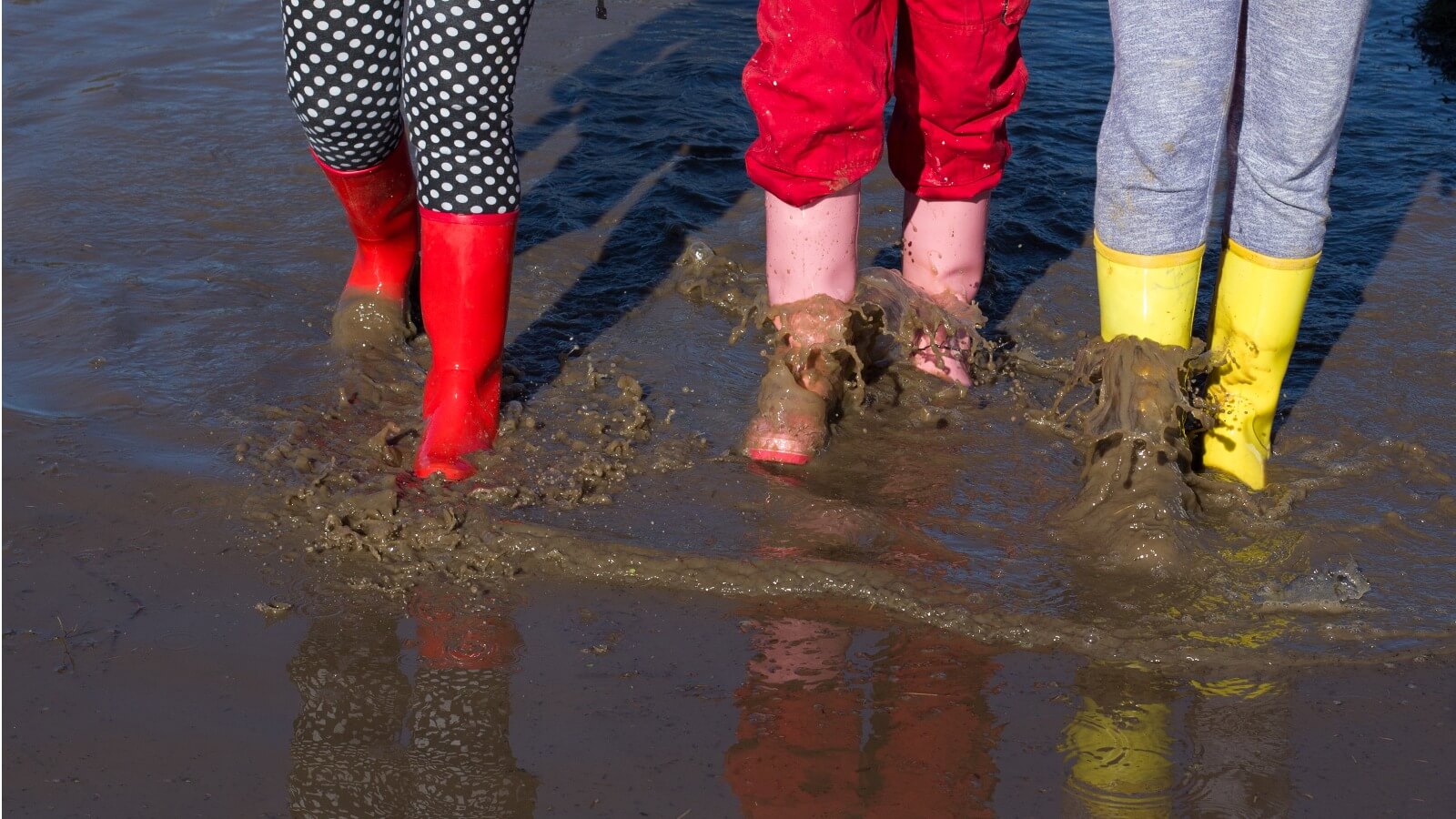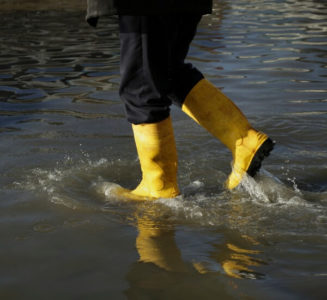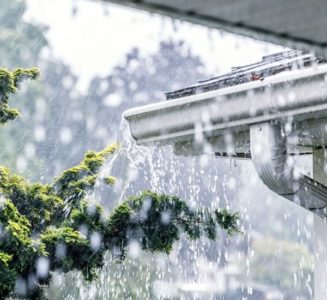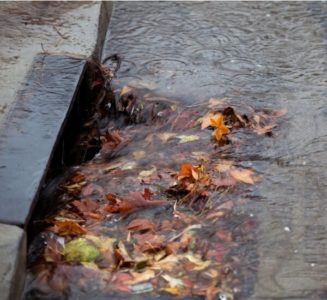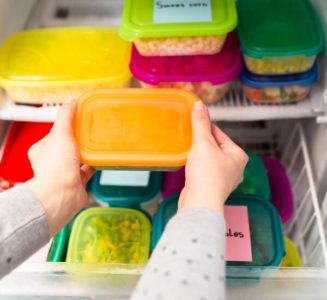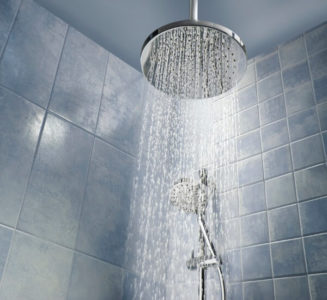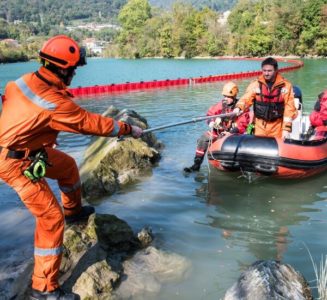It is totally understandable that for kids and big kids alike, a mass of floodwater looks like the ultimate rainy day playground. Before you get the boogie board out or decide to take the family for a muddy stroll, check out this information on why you should stay out of floodwaters and leave it to the experts.
A leisurely stroll in the rising waters?
Unless you HAVE to be walking in floodwaters, the recommendation from health providers is to not do it.
Floodwaters contain runoff from roads, fields, drains and potentially, sewage overflows. (Think poos and wees and anything else that is flushed down the toilet). Flood water can be filled with toxic chemicals such as gasoline or oil, pet and human waste and other contamination (pesticides, industrial chemicals and more), that has collected in stormwater drains.
While an afternoon of splashing in muddy puddles might sound like a great way to escape a dreary rain-soaked day, weekend or month – it can result in many acute illnesses and infections.
According to ProMedica health connect, it is especially dangerous for children.
Did you know raw sewage and floodwaters can be filled with
- E Coli,
- Giardia,
- Hepatitis A
- Tetanus
- Gastroenteritis and more!
Open cuts, grazes and wounds can become terribly infected! Try to cover any exposed cuts, scrapes and grazes with waterproof bandaids or bandages.
Floodwaters can also be dangerous due to fallen power lines and live wires. Water and electricity do not mix.
Be careful where you step
Just think – what might have been washed down stormwater drains? If you do need to walk through floodwaters be sure to wear gumboots or closed in suitable footwear, rubber gloves and protect your eyes from any splashes. Flooded waters are murky and difficult to see through. You cannot see the debris or damage underneath your feet. Rubbish, debris, branches, broken glass, garbage, loose items can all find their way into your flooded yards and walkways. Tread carefully and cautiously, hidden rocks and potholes can cause injury.
Don’t underestimate the current in the water associated with floodwaters, even when they appear to be shallow. Waters at shallow depths can carry enough current to sweep an adult off their feet. It is also important to not swim or paddle a surfcraft across floodwater for these reasons.
Think twice before you go for a play with the kids
A beautiful wet slope with a splashy pool of floodwater at the end might sound like an afternoon of great entertainment with the kids but … you might also consider the following additional hazards (alongside all the ones we have mentioned); storm drains, storm pipes and manholes can all become powerful whirlpools that can quickly carry light boogie boards, skimboard, rafts and kickboards and the people riding them into significant danger.
Health risks to swimmers
Avid surfers and swimmers also need to think twice before entering the ocean and waterways after heavy rain. Pollution from stormwater and sewage overflows has the potential to make water quality unsuitable.
Driving through floodwaters
Did you know, according to Royal Life Saving, that an average car needs only 10 – 20 cm of water above the bottom of the chassis before it can be lifted off the road surface and washed away?
Do not drive through standing water if downed power lines are in the water.
Drying out flooded garages and rooms?
The advice from ProMedica Health Connect is (when conditions allow) to pump out water very slowly, at a rate of about 1/3 of the water per day. This is to try not to cause structural damage from the decreased pressure. Items that have been saturated with floodwater, that cannot be suitably cleaned and dried should be thrown out. It includes canned goods, household items and even paper items like books, as these can continue to harbour and bacteria and contaminates from the floodwater.
No power or hot water?
During times of flooding, when power is cut and your water may be compromised it is important to drink bottled water.
Be cautious when you decide to throw an eat everything in the fridge party!
The following are guidelines for Power Outage Food Safety from the Food Safety Information Council.
- Food can remain safe in your refrigerator without power for 2 hours
- Food stored at more than 5 degrees Celsius for four hours or more should be thrown out.
- If you have sufficient space in the freezer, after 2 hours remove foods from the fridge and place them in the freezer or an esky with ice bricks.
- If you are unsure about the time that has passed or the temperature the food has been stored at then throwing food out is the best option.
Find out more about food safety here.
Check your insurance policy – Allianz mentions here that “depending on your insurance policy you may even be covered for spoiled food contained in the fridge, freezer or deep freeze unit if these appliances break down under specific circumstances.”
It is important to not neglect your personal health and hygiene to ensure you stay healthy also. Check with local gyms, aquatics centres as they may be able to offer hot showers, hairdryers, the chance to charge phones, torches and lights. For people on the Central Coast – visit Mingara One Fitness.
Need more information
Follow your local council website or Facebook page for regular updates in times of heavy rains, cyclonic conditions or flooding. Councils will work together with the Department of Planning, Industry and Environment in the Beachwatch Program. They will monitor and test water quality regularly throughout significant weather events.
If you require assistance to leave your home you can call the SES in your area. In NSW – call NSW SES 132 500.
For any emergencies that are life-threatening call 000 immediately
Fallen powerlines – do not go near them. Contact AUSGRID 13 13 88
